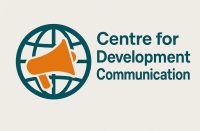As communities across West Africa engage in an endless search for healthcare service delivery, motorcycle ambulance has proven to be very imperative in helping the rural residents in addressing healthcare challenges.
Most communities in West Africa are now using motorcycles to convey patients to hospitals. Most of the patients are women. In Ghana, the government has woken up to this reality as the Ministry of Health has put up plans to adopt the use of motorcycle ambulance to convey patients that require urgent health care in the state rather than making use of vehicle ambulance.
This arises as a result of the challenges in the cost of buying vehicle ambulances together with the high cost of maintaining them. Motorcycles are the best option for the government since they are cheaper and easy to maintain. A fully equipped motor-vehicle medical ambulance is sold at about 100 and 130 million shillings (between 38,165 USD and 49,615 USD) whereas a motorcycle ambulance is sold at about 20 (about 7,680USD) and 30 million shillings (about 11,450 USD).
In Guinea, the trend is not different as motorcycle ambulances are playing an important role and saving lives in communities and remote villages. A graphic case here is using a motorcycle ambulance to convey Marie Tounkara from her remote village to the Kissidougou principal hospital where she put to bed a baby boy.
This initiative becomes more interesting when one looks at what is happening in Guinea where numerous remote villages in Guinea do not have motorable roads and motorcycle ambulances have become the best option to help the inhabitants of these villages to get to hospitals to access medical attention in an emergency situation.
The motorcycle ambulance initiative and project came into existence in 2008 as part of expanding maternal health programmes in Guinea under the mutual health insurance organizations aka MURIGAs. This was established by the government of Guinea in partnership with UNICEF.
Namibia has launched its motorcycle ambulance project in partnership with the Bicycling Empowerment Network Namibia (BENN). This project will facilitate the manufacturing and delivery of over 60 motorcycle ambulances to different communities in Namibia for the coming 12 months.
However, this goes beyond the mere improvement in the delivery of health service and transportation, but to enhance the capacity of the communities’ inhabitants on local technology. The inhabitants of the communities are trained on how to construct and maintain the ambulance.
In Nigeria, Transaid has introduced motorcycles ambulance to make available emergency transport for pregnant women. Senegal is not left out in this initiative as the Women’s and Health Alliance International (WAHA) piloted the test of motorcycle ambulance in the country in 2010, though a more fortified design was finalized a year after.
In 2011, WAHA produced over 100 motorcycle ambulances with support from the Fistula Foundation and they are being used in Senegal, Ethiopia, Somalia and Kenya. Six ambulances are being used in 47 villages, two health centres and the main district hospital in Sierra Leone, and they serve a sum population of 22,152 persons.
Though this is a good initiative, it is likely not to be improved upon as we have seen in most of the local and traditional technology initiatives across West Africa.
Most countries in the region do not seem to take initiatives of this kind seriously enough to improve on them. Governments in the region are yet to start making financial and political commitments to traditional technological developments.
